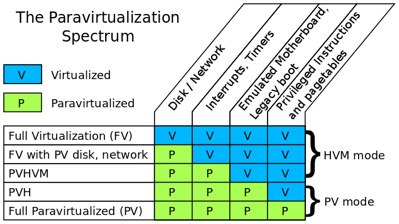| « GigaTux is Bitcoin-Friendly | Why Switch to IPv6 - Well written article from Sophos » |
The Paravirtualisation Spectrum on Xen

With GigaTux's HVM offerings (mainly Windows but some BSD in there as well) we very strongly recommend users install paravirtualised network and disk drivers. In Windows, this is offered by the GPL PV installer. However, we didn't really know that there was more of a spectrum between PV and full virtualisation and this article by George Dunlap details how this works in a comprehensive manner. It's fascinating to hear that even what we consider standard paravirtualised Linux instances could be making use of some HVM functionality to negate the need for a PV MMU, and we look forward to this transparent speed boost in the near future!
What if we could run a fully PV guest -- one that had no emulated motherboard, BIOS, or anything like that -- but used the HVM extensions to make the PV MMU unnecessary, as well as to speed up system calls in 64-bit mode?
This is exactly what Mukesh's PVH mode is. It's a fully PV kernel mode, running with paravirtualized disk and network, paravirtualized interrupts and timers, no emulated devices of any kind (and thus no qemu), no BIOS or legacy boot -- but instead of requiring PV MMU, it uses the HVM hardware extensions to virtualize the pagetables, as well as system calls and other privileged operations. We fully expect PVH to have the best characteristics of all the modes -- a simple, fast, secure interface, low memory overhead, while taking full advantage of the hardware.